Galaxy Watch 5 and Watch 5 Pro review: The best Android watch gets a modest update<p>The best non-Apple smartwatch has long been Samsung’s Galaxy Watch series, thanks to its comprehensive health and fitness tracking, intuitive interface and comfortable, pleasant design. For a product that’s so mature, it’s hard to imagine what else Samsung can improve upon, which might explain why the Galaxy Watch 5 is very similar to its predecessor. It even costs <a data-i13n="elm:affiliate_link;elmt:skimlinks;pdid:the same $280;" href="
https://go.skimresources.com/?id=72705X1521812&xs=1&url=https%3A%2F%2Fwww.samsung.com%2Fus%2Fwatches%2Fgalaxy-watch5%2Fbuy%2F">the same $280[/url] to start.</p><p>Most of the changes here aren’t immediately visible, like a more durable build, an inactive temperature sensor and better battery life. Samsung also introduced a <a data-i13n="elm:affiliate_link;elmt:skimlinks;pdid:new Pro model for $450 ;" href="
https://go.skimresources.com/?id=72705X1521812&xs=1&url=https%3A%2F%2Fwww.samsung.com%2Fus%2Fwatches%2Fgalaxy-watch5%2Fbuy%2F%3FskipDevice%3Dgalaxy-watch5-pro">new Pro model for $450 [/url]that comes in a 45mm titanium case, uses a stronger screen and has a large 590mAh battery, promising a runtime of up to 80 hours. Still, the fact that the tweaks are small doesn’t mean the Galaxy Watch 5 can’t still be the best smartwatch around for Android users.</p><span id="end-legacy-contents"></span><h2><strong>Design</strong></h2><p>Like I said, the Galaxy Watch 5 looks just like
its predecessor, and comes in the same 40mm and 44mm sizes as before. Both are a few grams (or less than a quarter ounce) heavier than the previous generation, but it’s barely noticeable. The lack of change isn’t a bad thing — the Galaxy Watch’s round face and minimalist design make it look more like a conventional timepiece than
the Apple Watch.</p><div id="e5151f79ca11446f9034f802e092a0c7"><iframe width="560" height="315" src="
https://www.youtube.com/embed/PItwjCFVJfs" title="YouTube video player" frameborder="0" allowfullscreen></iframe></div><p>My 40mm review unit has a silver case, though black and pink gold are also available, while the 44mm model is available in silver, black or sapphire. I also received a comfortable silicon purple strap, which is more inoffensive than lust-inducingly pretty. If you want something nicer, you can easily swap out the bands.</p><p>It’s not immediately obvious, but Samsung used a more durable Sapphire Crystal glass for the Watch 5’s screen. I have yet to destroy a smartwatch even during my wilder gym sessions, but I was grateful for the reinforced materials during a workout recently. I had forgotten about the Watch 5 and Watch 5 Pro on my wrists, and flipped a pair of 26-pound kettlebell onto the back of my arms. Thankfully, neither device was scratched, and I continued to rack the weights as I powered through two more sets. To be fair, I’ve also done this same exercise with the Apple Watch and haven’t damaged it either.</p><p>Like its predecessors, the Watch 5 is also rated IP68, 5 ATM and MIL-STD-810H for durability (water, dust and pressure resistance). I wore it swimming recently, and though it wasn’t as accurate as the Apple Watch at tracking laps, it at least survived. Those who liked Samsung’s bezel-based navigation will appreciate the touch-sensitive ring framing the screen that you can use to scroll through
the Wear OS interface, as well as the mild haptic feedback as you whizz past apps. I still prefer a physical rotating bezel, but I get that not everyone wants the added bulk.</p><figure>
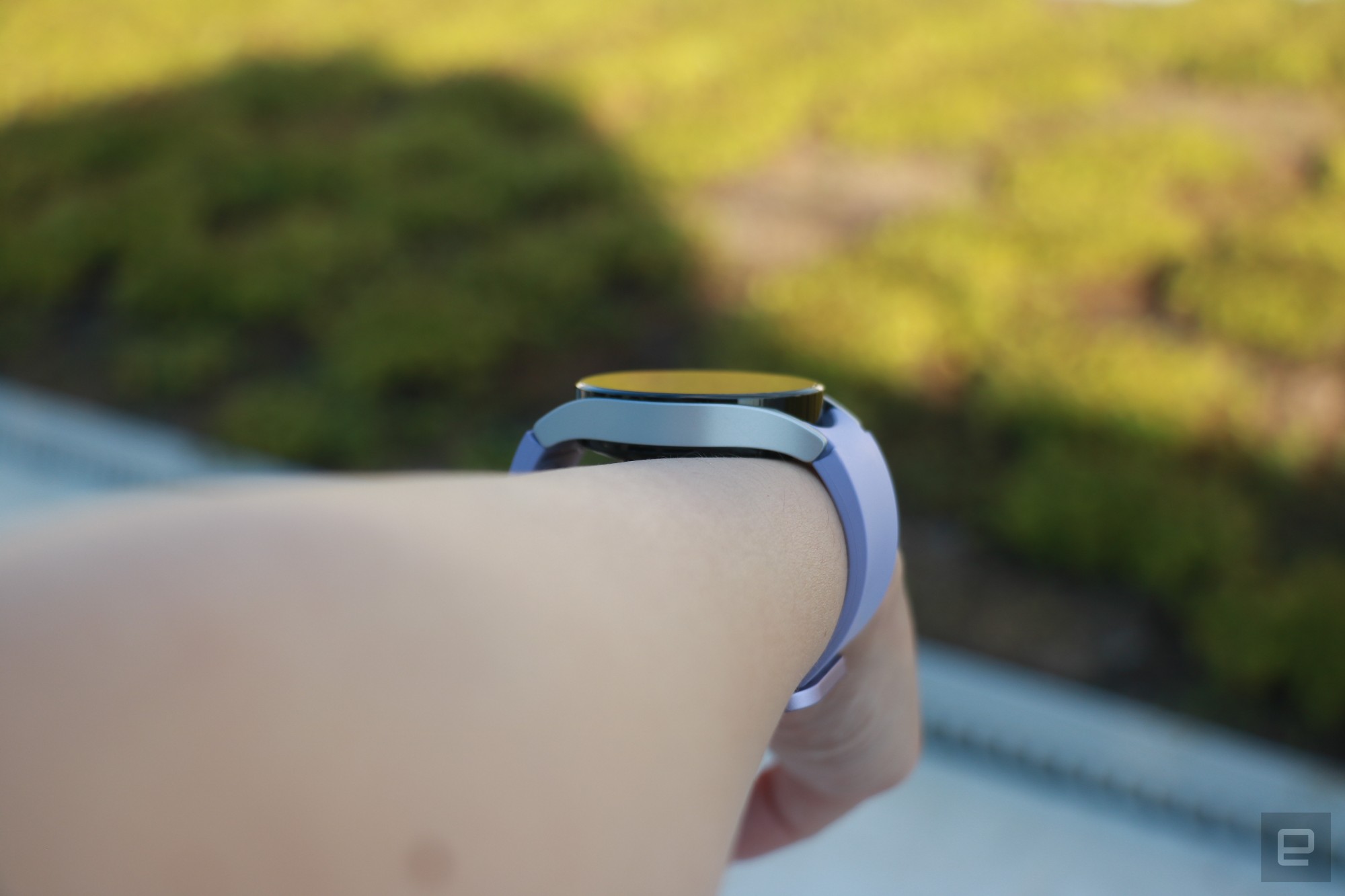
<figcaption></figcaption><div class="photo-credit">Cherlynn Low / Engadget</div></figure><p>One of the main differences Samsung brought to the Watch 5 is the refined curvature of its underside. This is meant to keep the watch in contact with more of your wrist so its sensors can deliver more reliable readings. Unfortunately, I found this kind of uncomfortable. Both the Galaxy Watch 5 and Watch 5 Pro would leave round indentation marks on my wrist after I removed them, no matter how much I adjusted the fit.</p><p>This was only mildly annoying, and I put up with it because I thought I was getting more reliable scans in return. But I realized that the Galaxy Watch 5 was consistently giving me almost exactly the same readings as the Apple Watch Series 7 that I wore on my other wrist, and the latter never felt as tight. Another reviewer I spoke to said they found the Watch 5 very comfortable, though, so this might be a matter of personal preference.</p><h2><strong>Sleep-tracking and coaching</strong></h2><p>This also applies to wearing a watch to bed — some people don’t mind it, others hate it. I belong in the latter camp, but still wore the Galaxy Watch and Apple Watch to bed to compare their sleep-tracking tools. As I’ve said before, Apple’s system is atrocious. You have to either set a bedtime or enable your Sleep focus before the device can tell you’re asleep. Even then, it doesn’t really actually know if you’re awake or passed out. Samsung can figure it out all on its own.</p><figure>
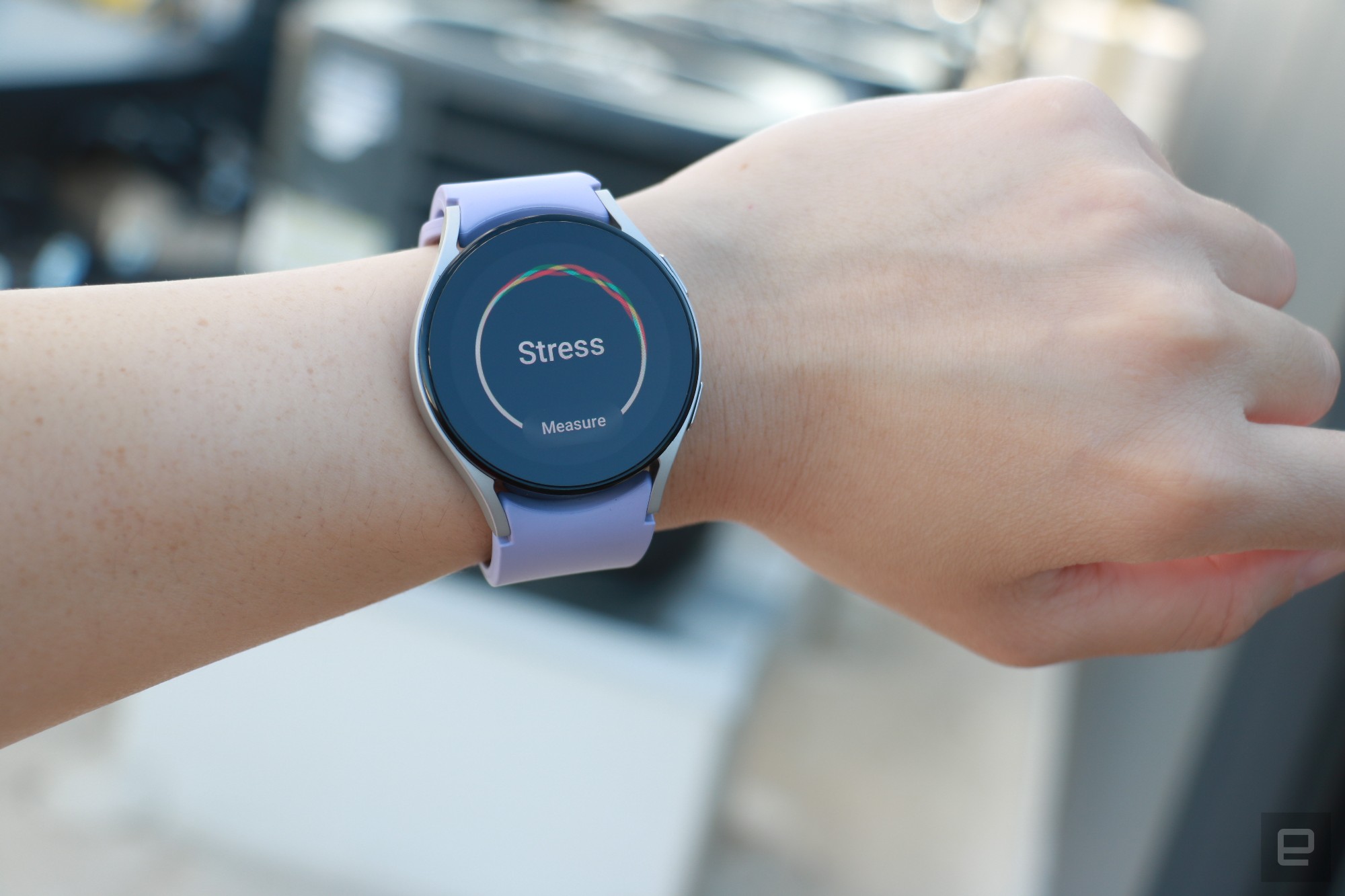
<figcaption></figcaption><div class="photo-credit">Cherlynn Low / Engadget</div></figure><p>One night, I wore both watches to bed, making sure to note the time right before I flipped over and closed my eyes. The Galaxy Watch 5 accurately noted that I fell asleep around 1:30am and woke up at 4am, while Apple simply told me I got a full night’s rest from 11pm to 9am.</p><p>I could go on about how infuriating it is that Apple can’t figure out something that Fitbit and Samsung managed to years ago, but this isn’t a watchOS review. The Galaxy Watch 5, like Fitbit’s watches, will also use your heart rate information to gauge what sleep zones you hit and tell you how much time you’ve spent in REM, Deep or Light sleep. Meanwhile, that feature is slated to arrive with
the upcoming watchOS 9.</p><p>Sleep-tracking isn’t new to the Galaxy Watch 5, but Samsung did add a sleep coaching tool that’s meant to guide you towards better rest. However, it requires 5 weeknights and 2 weekend nights of data before any tips are generated, and I haven’t logged that many hours yet. Plus, my data would be skewed anyway — any time I wear any accessory to bed, I sleep horribly. This might be an insightful feature, I just can’t tell you right now.</p><p>Another thing I can’t evaluate at the moment is whether the skin temperature sensor that Samsung introduced on the Galaxy Watch 5 will be useful, since it’s not currently doing anything. There are plenty of potentially useful applications for that data, though, so it’ll be interesting to see what the company is able to do with this.</p><section data-eng-breakout="4c597456c00843d0b267dac226cf2306" data-eng-breakout-type="e2ehero"><img class="e2ehero-url" src="
https://s.yimg.com/os/creatr-uploaded-images/2022-08/61381050-2493-11ed-87f5-ce5ac59f96f6" alt="The Samsung Galaxy Watch 5 on a wrist, showing the " data-uuid="1fdc0249-a97a-3ed2-b195-af9c99a858d1"></section><h2><strong>Health and activity tracking</strong></h2><p>Samsung has also long been better than most Wear OS watches at monitoring your activity, and the Watch 5 is no different. When I was stuck at my desk for hours on end pounding out this review, it reminded me to get up and move. I have always appreciated that in addition to walking, Galaxy Watches would also suggest movements you could perform at your desk, like torso twists or stretches. Even better, the device would be able to detect exactly how many twists you’ve done — something the Apple Watch and other Wear OS devices don’t do.</p><p>In general, Samsung’s system is as proactive as ever. When I got up to walk around after the Watch 5 prompted me to, the device buzzed after I took about a dozen steps to congratulate me for moving. That’s a lot less than Apple’s demands, which can make me feel like I need to pace my room like I’m going mad.</p><p>Galaxy Watches are also quicker to recognize when you’ve been moving and will ask if you want to record your walk. The flip side of that is they’re also hyperactive at noticing when you’ve paused and will not only suspend tracking, but will buzz you to let you know it’s not counting the time while you’ve stopped.
Chill, Samsung!</p><figure>
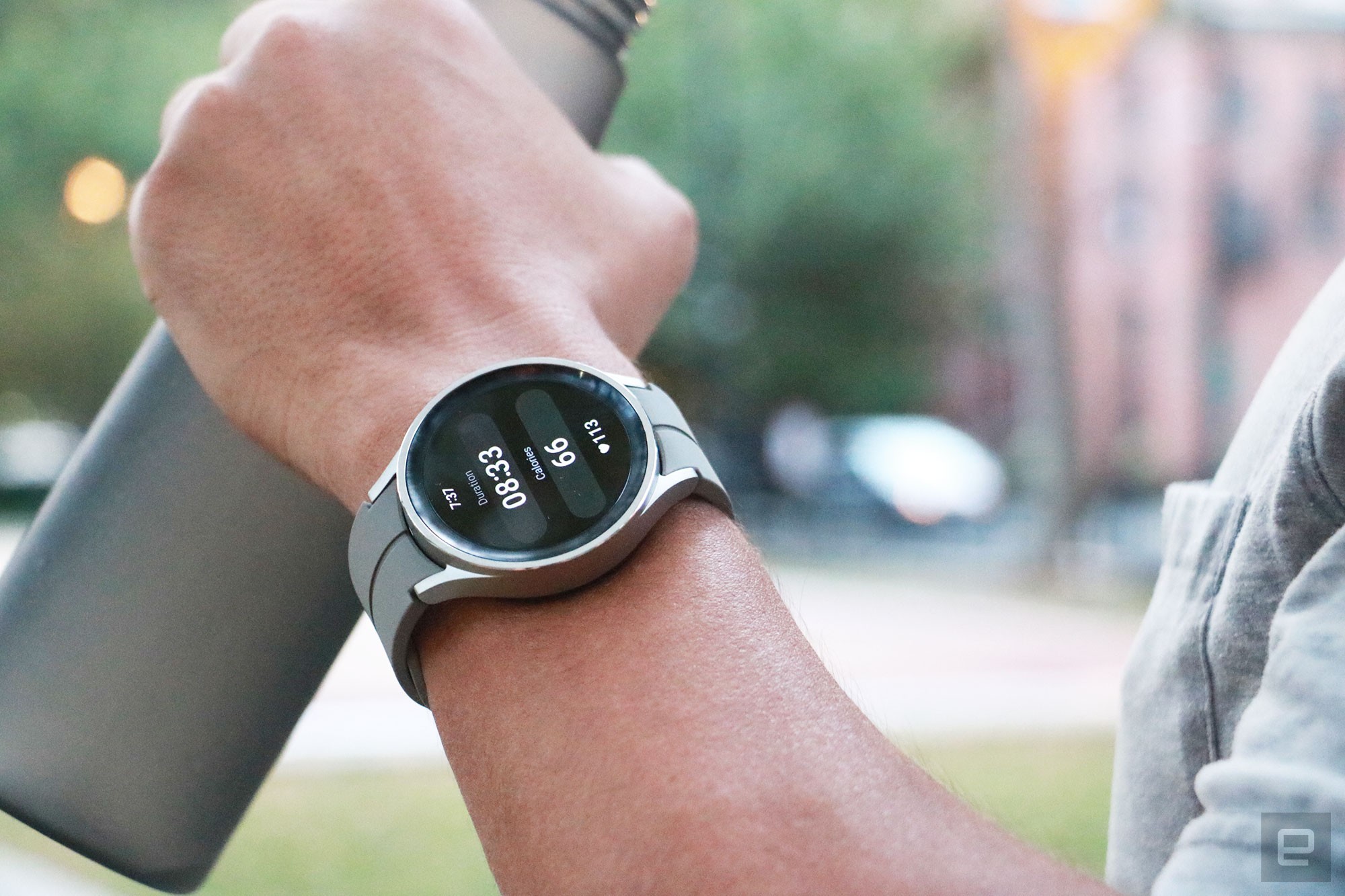
<figcaption></figcaption><div class="photo-credit">Cherlynn Low / Engadget</div></figure><h2><strong>Performance and in use</strong></h2><p>Besides the sleep coaching feature, not much is different between the Watch 4 and Watch 5 when it comes to software. You’ll still be able to get a body composition reading using the built-in body-impedance analysis (BIA) tool, take ECG scans, reply to messages, control music playback and more. The Watch 5 also uses the same 5nm Exynos processor as the older model, and for the most part was just as responsive. I only really had to wait when creating new watch faces or taking a body fat scan — otherwise, everything happened the instant I tapped the screen.</p><p>Speaking of, if you were wondering about the accuracy of the Watch 5's body composition measurements — it's surprisingly close to results from more sophisticated systems. I recently tried an InBody scan, which is a more advanced version of BIA like that on the Watch 5. Samsung's readings were just about two percent off on body fat percent and less than a pound under my skeletal muscle as calculated by the InBody version. </p><p>I actually forgot that the Watch 5 is a Wear OS device, because the its software still feels so much like Tizen. Besides swiping up and down from the home screen to pull up all apps and settings, the majority of the side-swiping interface feels no different from Samsung’s original OS.</p><figure>
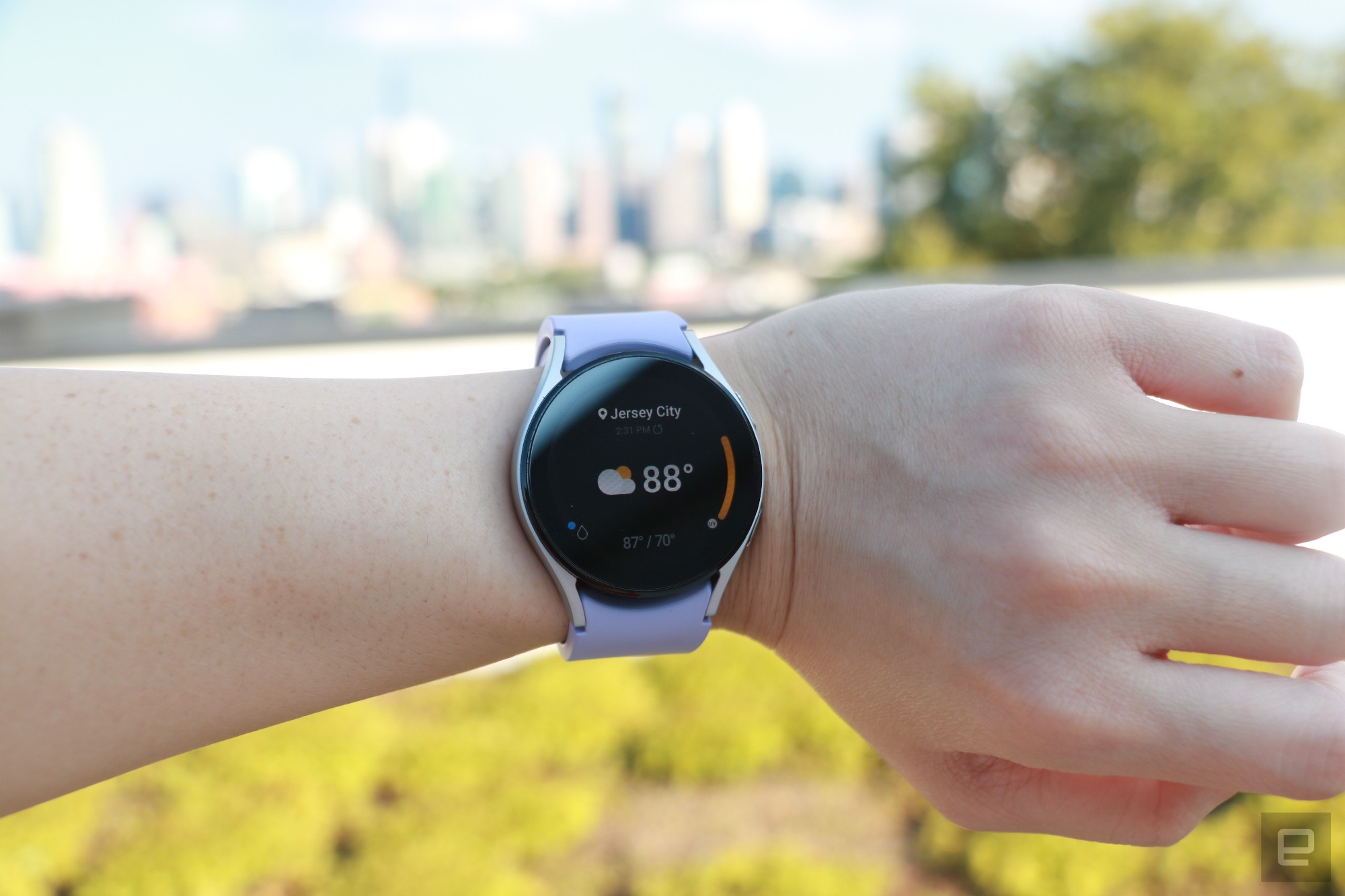
<figcaption></figcaption><div class="photo-credit">Cherlynn Low / Engadget</div></figure><p>One thing I wish Wear OS / Tizen did better was displaying workout information. Apple uses a large, bold font to show how long you’ve been working out, as well as your heart rate and calories burned. Samsung displays similar information, but using a font that’s a lot thinner and smaller. When my Watch 5’s screen was locked during my swim and I couldn’t tap it, I couldn’t see any info at all and had to unlock water mode mid-lap to bump up brightness to the max. Even then, it was only slightly better.</p><p>It’s also worth noting that because they’re typically secondary devices, a significant part of the smartwatch experience is interacting with its companion apps on your phone. In this case, you’ll need to install the Galaxy Wearable app to set up your Watch 5, and Samsung Health to see details about your workouts and sleep sessions. In general, these apps were easy to use and navigate and I found settings or health summaries quickly. Samsung also shows what cardio zones you were in during a workout or sleep session, and this information is only coming to watchOS 9 when it’s publicly available later this year.</p><h2><strong>Battery life and recharging</strong></h2><p>I wore the Apple Watch Series 7 and Galaxy Watch 5 on each wrist for a week and every day they delivered almost exactly the same runtime, though with one caveat. Both devices clocked slightly over a day before conking out, although enabling the Always On Display (AOD) caused the Watch 5 to drain noticeably faster. One night, the Samsung watch dropped to 4 percent by 7:21pm, while the Apple Watch was still holding strong at 38 percent despite also having AOD on.</p><figure>
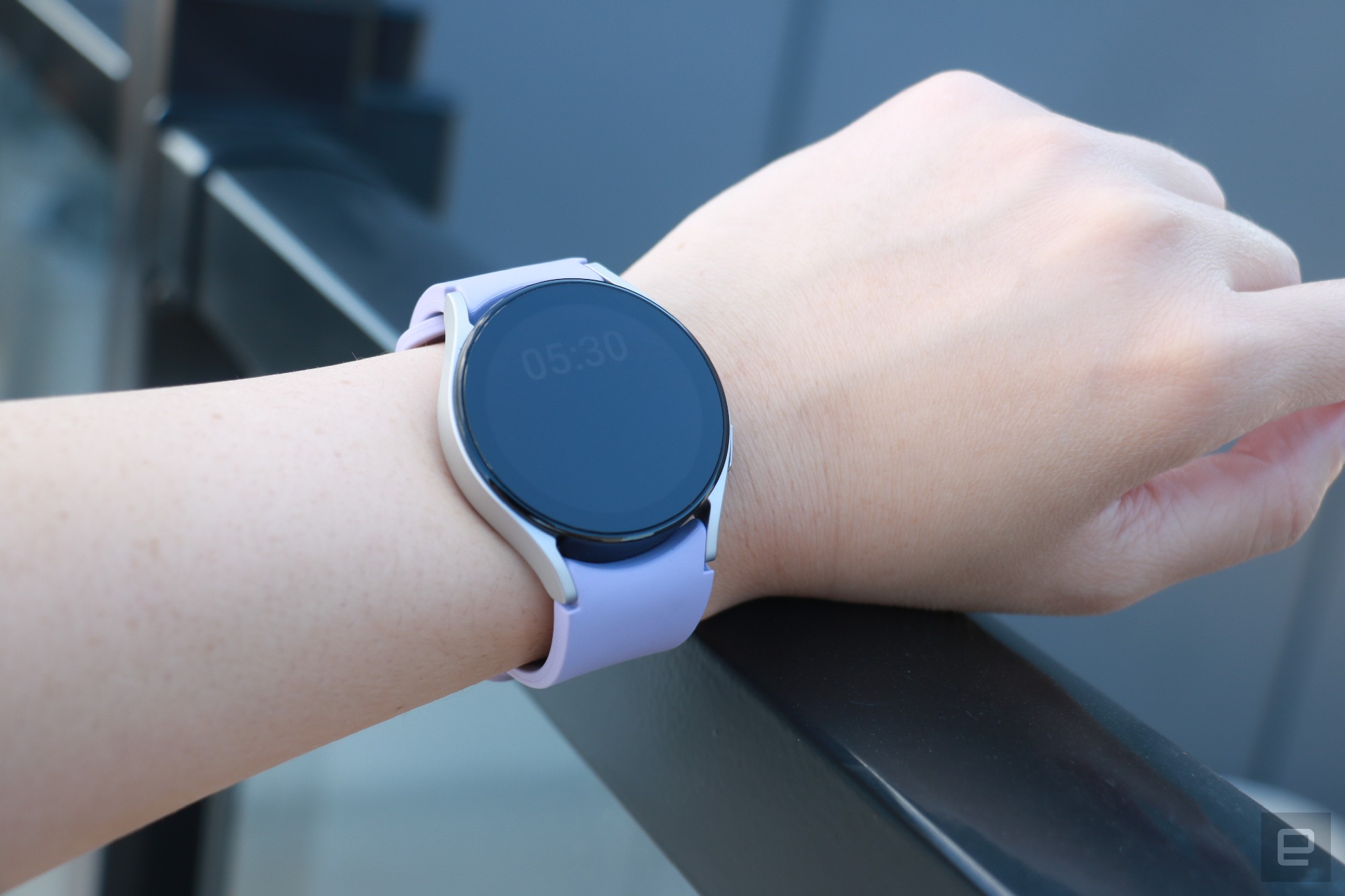
<figcaption></figcaption><div class="photo-credit">Cherlynn Low / Engadget</div></figure><p>Both watches recharged quickly, so I never had to wait longer than 30 minutes to get enough juice for half a day’s wear. When I wore the watches overnight to test sleep tracking, the Apple Watch used less power than the Galaxy Watch, but the latter actually delivers better results, which seems like a worthwhile tradeoff.</p><h2><strong>The Pro difference</strong></h2><p>The Pro model of the Watch 5 typically lasted a few hours longer than the 40mm model with its Always On Display enabled, and I got close to a day more juice with the setting turned off. Though Samsung markets the Watch 5 Pro as having been designed “for the great outdoors,” there’s really little about it that makes it feel that way.</p><p>The Pro is noticeably bulkier, too. I have fairly petite wrists, so the 45mm titanium case felt overwhelming. It also has a chunky frame around the screen where a rotating bezel might sit, although there is no mechanical spinner here. While the D-buckle closure makes the Pro fit more securely, it adds to the general heft.</p><core-slideshow data-slideshowid="244cfa60-5718-44f8-aafe-8486464d51e4" /><p>That might not be a bad thing if you don’t mind oversized watches, and the bonus is that the Watch 5 Pro feels strong enough to withstand being smashed against boulders. I had it higher up my forearm when racking kettlebells like I mentioned earlier, so the weights actually landed on its screen. Despite being smacked by 26 pounds of metal, the Watch 5 Pro survived without a scratch, and I continued to run through my reps without much concern. The stronger Sapphire Crystal glass that Samsung uses here definitely held up, at least during my testing.</p><p>The other feature differentiating the Pro from the regular Watch 5 is its support for the
GPX route format for workouts like hiking and cycling. You’ll have to go into the Samsung Health app on your phone to pick a previous route and export it as a GPX file, go into Hiking or Cycling and import that information. Then, from the Watch 5 Pro, you can select one of the routes you loaded under one of those exercises to start the same journey, and the device will show you turn by turn directions.</p><figure>
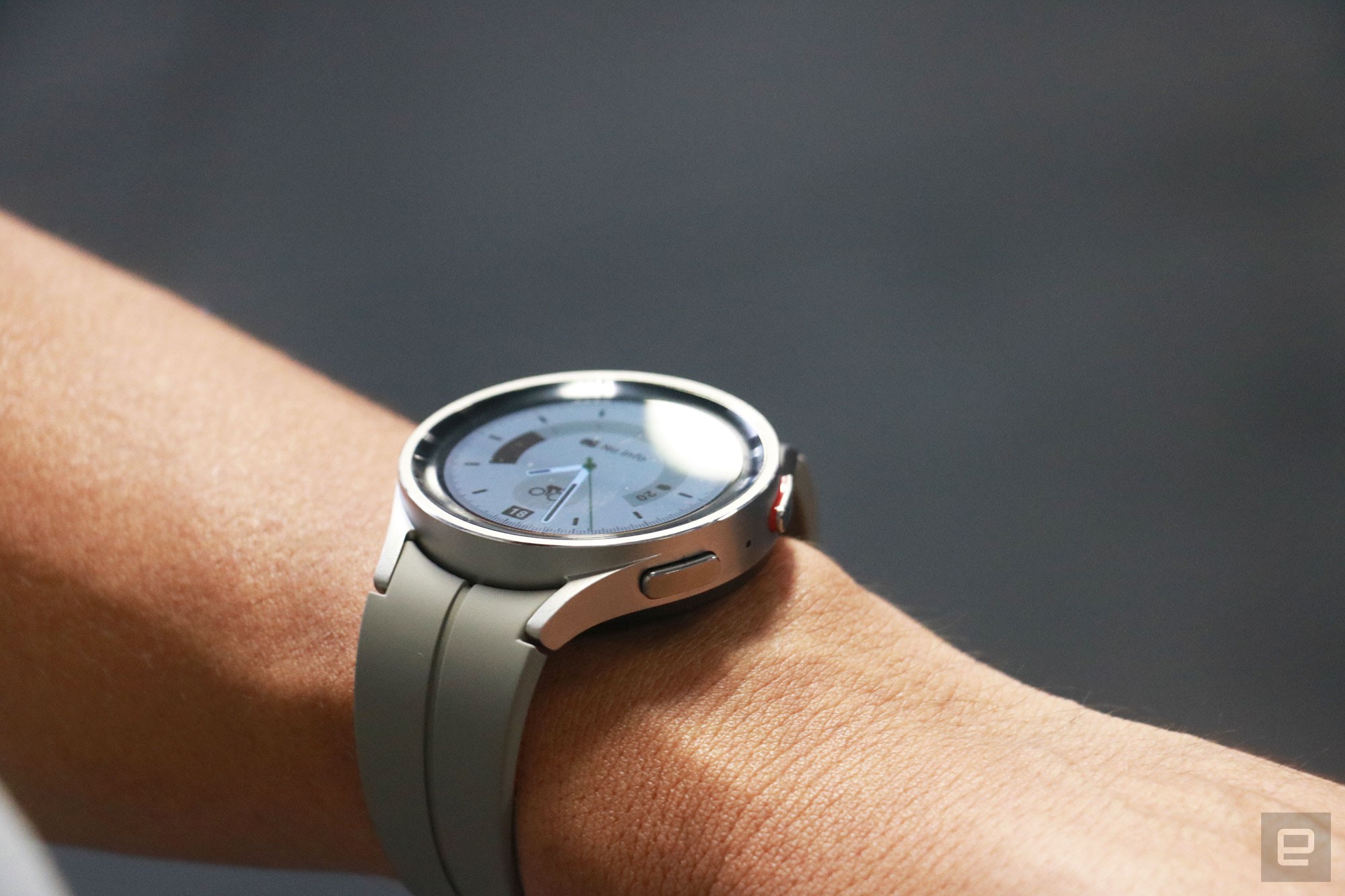
<figcaption></figcaption><div class="photo-credit">Cherlynn Low / Engadget</div></figure><p>It’s a little tricky to set up, but potentially helpful for those who are in a new place and want to try out a local route by downloading GPX files from databases. Samsung also added a Track Back feature that will take you home the way you came and it’s only available for hiking or cycling for now.</p><h2><strong>Wrap-up</strong></h2><p>Even though most of the changes Samsung brought to the Watch 5 line are minimal, the fact remains that for Android users, this is the best smartwatch around. I might not like the refined curvature of the underside, but it does make for more reliable sensor readings. The Watch 5 Pro is also a little bulky for my taste and the only real improvement it offers over the regular model (aside from size and durability) is a bit more battery life.</p><p>Still, thanks to its well-rounded and capable health and fitness tracking tools, the Watch 5 is one of the best smartwatches around.</p>
Source:
Galaxy Watch 5 and Watch 5 Pro review: The best Android watch gets a modest update